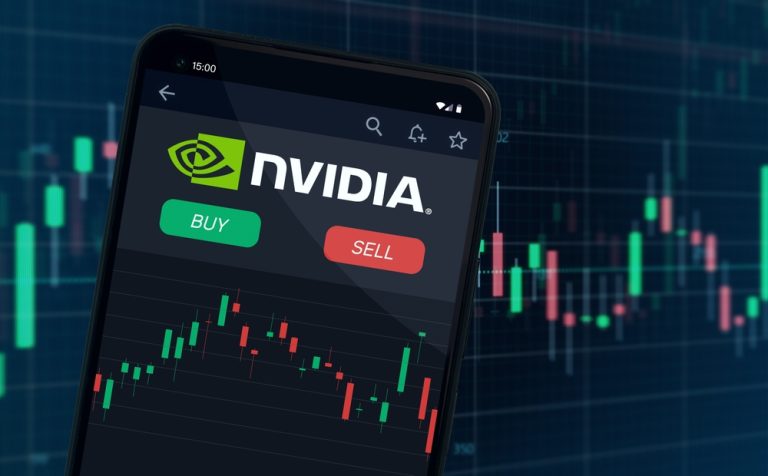Nvidia (NASDAQ: NVDA) has experienced staggering growth, transforming from a $360 billion company at the start of 2023 into a $3.5 trillion behemoth within less than two years. The company’s rapid expansion is fueled by its unrivaled position in the artificial intelligence (AI) space, where its graphics processing units (GPUs) dominate global demand.
The company’s data center GPUs, crucial for developing and running AI models, have driven triple-digit revenue growth for five consecutive quarters. As Nvidia prepares to release its fiscal 2025 third-quarter results on November 20, investors are anticipating another strong performance that could further propel the stock.
Blackwell Chips: The Next Big Leap
Nvidia’s newest Blackwell architecture promises to be a game-changer, offering unparalleled performance enhancements. The GB200 GPU systems, part of the Blackwell line, can execute AI inference at 30 times the speed of the older H100 systems. This performance boost is expected to significantly impact the company’s financials, particularly as shipments of the GB200 have already begun and are projected to reach up to 200,000 units in the last quarter of 2024.
CEO Jensen Huang disclosed that individual GB200 GPUs are priced between $30,000 and $40,000, similar to the H100’s launch price, making the latest generation a highly efficient option for large-scale AI development. The Blackwell chips are expected to democratize access to cutting-edge AI capabilities, allowing a wider range of businesses and developers to leverage advanced large language models (LLMs).
Wall Street’s High Expectations for Q3
Nvidia’s fiscal 2025 second-quarter results shattered expectations, with the company reporting $30 billion in revenue—a 122% year-over-year increase and well above Wall Street’s forecast of $28.7 billion. Data center revenue alone contributed $26.3 billion, representing a 154% jump due to robust GPU sales.
For the upcoming third-quarter results, Nvidia projected revenue of $32.5 billion, higher than the initial consensus of $31.7 billion. Analysts have since raised their expectations, forecasting $32.9 billion in revenue. If Nvidia surpasses this, it could trigger another surge in the stock, building on its recent 24% gain since August.
The chipmaker’s consistent overperformance in revenue and EPS, which reached $0.68 per share in Q2 (a 152% increase), supports optimism for future quarters. Wall Street has pegged Nvidia’s EPS for fiscal 2026 at $4.06, which aligns with a forward price-to-earnings (P/E) ratio of 35.8. Maintaining its current P/E of 68.1 would imply a potential 90% stock price increase over the next year.
Growing Demand from Tech Giants
The insatiable demand for Nvidia’s AI GPUs is evidenced by the capital expenditures of tech giants. Microsoft, Nvidia’s largest rumored buyer of Blackwell chips, reported $20 billion in capex for its fiscal 2025 first quarter, most of which was allocated to data center infrastructure and AI chip investments. This followed a massive $55.7 billion in capex for fiscal 2024.
Amazon and Meta Platforms are also ramping up their investments in AI infrastructure. Amazon is projected to spend over $75 billion on AI-focused capex this year, while Meta is expected to allocate up to $40 billion, with even more investments planned for 2025. This substantial expenditure highlights the clear demand trajectory for Nvidia’s GPUs, promising sustained revenue and earnings growth.
Navigating Valuation and Future Prospects
Despite its high valuation—currently trading at a P/E of 68.1 compared to the Nasdaq-100’s average of 31.8—Nvidia’s potential for future growth remains strong. Historically, Nvidia has maintained an average P/E of 58.4 over the last decade, a period that largely preceded the massive boost from AI applications. The valuation, while elevated, reflects the company’s unique position in a rapidly expanding market where AI advancements are projected to contribute up to $200 trillion in global economic activity by 2030, according to ARK Investment’s Cathie Wood.
As Nvidia prepares to report its third-quarter financials, the market is poised for potential bullish momentum. The company’s strategic advancements, especially with its new Blackwell chips, position it to continue benefiting from the global AI boom. If Nvidia’s results exceed Wall Street’s raised expectations, the stock could climb higher, reinforcing its status as a leader in AI technology and innovation. The unwavering demand from tech giants for its GPUs ensures that Nvidia’s growth trajectory remains strong for the foreseeable future.


